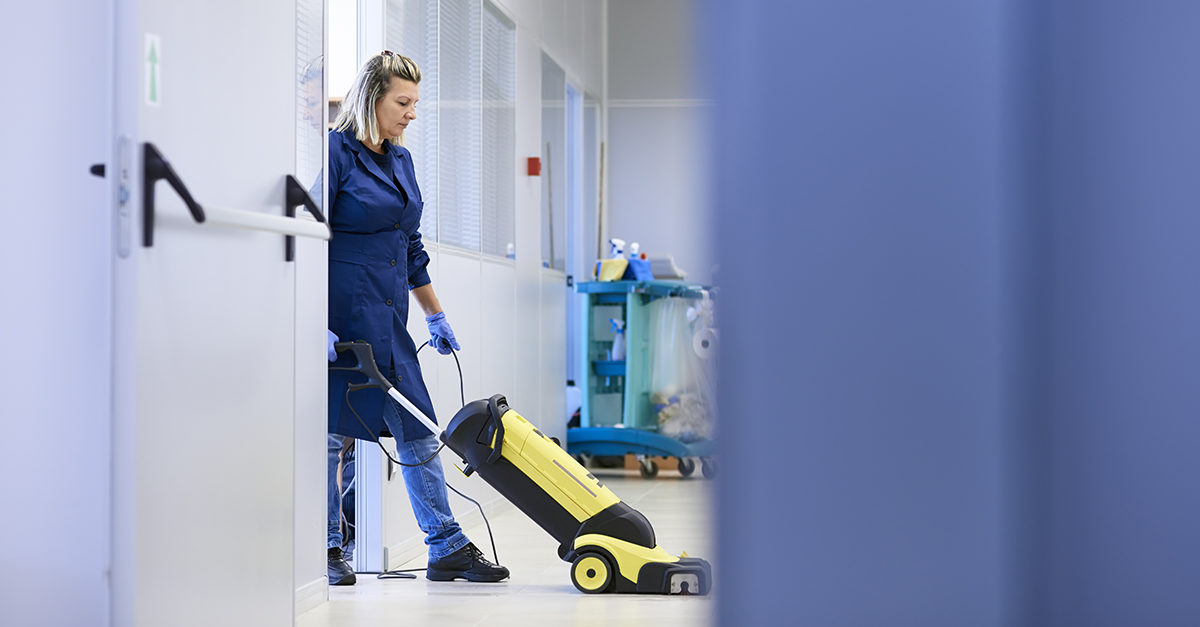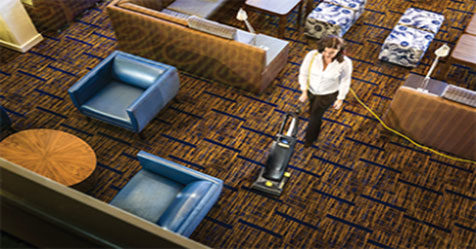Establishing the needs of the facilities you manage is crucial for delivering exceptional cleaning results. Follow these steps to help you determine which vacuum settings you need and how to properly set up the vacuum for your specific job:
Step No. 1: Determine Your Priorities
Tailor your needs based on the industry in which you service and your responsibilities. For example, schools require cleaning each day before the bell rings, so high-performance and power are important. Hotels and restaurants require cleaning several times a day to meet high expectations, so quiet cleaning is necessary. Cleaning large areas is important in offices, so look for reliable machines that cover a lot of ground quickly.
Step No. 2: Choose Key Features
Once you narrow down your industry’s priorities, it’s important to select a vacuum model equipped to meet them. Look for professional-grade features, components, and specifications based on your needs.
- Corded: Vacuums featuring quick-disconnect power cords can help reduce downtime if you damage a cord. An extension cord replacement eliminates time required to replace a permanent cord.
- Cordless: Speed up productivity by eliminating cord changes and the need to search for outlets. For on-the-spot cleaning needs, use models with quick recharge times and long-lasting power.
- Quiet cleaning: If it’s important to clean quietly, consider vacuums with 70 A-weighted decibels (dBA) or less. These vacuums help meet LEED requirements for sound and keep energy costs down.
- Lightweight: Models weighing 16 pounds or less allow for easier maneuverability and comfort.
- Allergen reduction: For allergen reduction and improved air quality, look for vacuums that feature a sealed HEPA system and a HEPA filter on the exhaust.
- Motor life: Models with extended motor life provide years of reliable performance, reducing cost of ownership over time.
- Multisurface cleaning tools: Extension wands are useful for extended-reach cleaning. Crevice tools allow for easy cleaning in tight spots like corners and baseboards. Upholstery tools are ideal for vacuuming stairs and furniture.
Step No. 3: Get Prepped
Once you have a vacuum armed with the features you need, it’s important to adjust a few settings and check some key parts to make sure you’re ready to get the job done:
- Bag: Check that the bag is either new or has enough room for extended cleaning.
- Height settings: Get quick adjustments for multiple floor surface types using the height adjustment knob. Remember: The brushroll must reach the carpet to be effective.
- Filters: Inspect filters for blockage and clean them if necessary.
- Brushroll and belt: Look for damage or tangled debris (such as hair) before each use.
- Tools: Make sure hoses and wands are properly secured, and attachment tools are in the storage position so you can easily access them.
It’s helpful to choose equipment that can be assembled and maintained easily. In addition, don’t forget to take time for daily inspection and maintenance, and follow manufacturer instructions for proper cleaning and safety.
By selecting the right vacuum features and settings for your industry and job, you can efficiently clean every surface, crevice, and corner to deliver exceptional results day in and day out.




